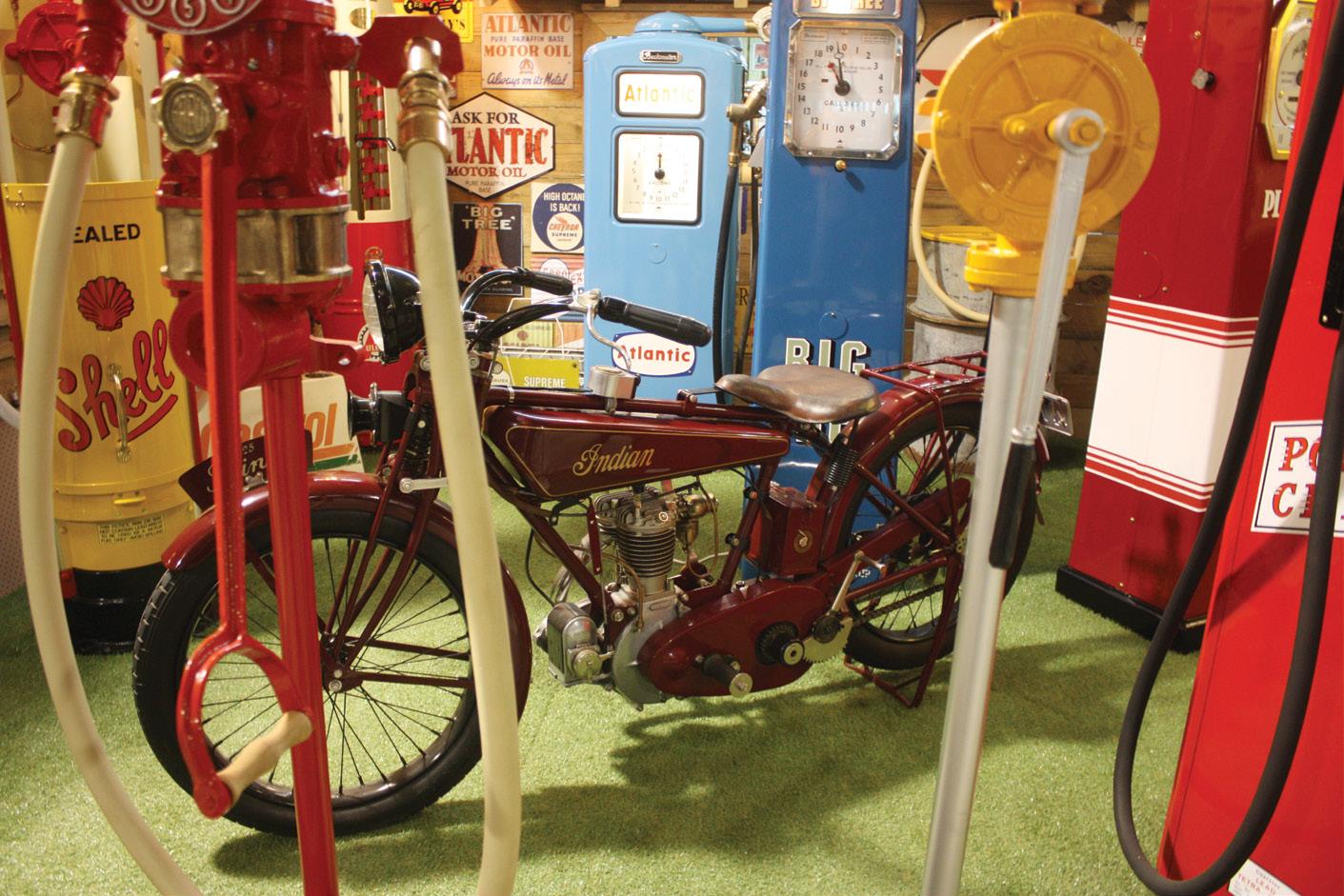
3 minute read
Dannevirke Shed Suprise
DANNEVIRKE SHED SURPRISE
WORDS AND PHOTOS KEVIN BALL
In the wilds out the back of Dannevirke there’s a farm shed. It’s big, but nothing special. No sign announcing its purpose and no welcome mat for visitors.
But for the fortunate ones invited through the front door there’s an amazing experience.
The interior is packed with museumquality exhibits relating to trucking and motorcycling, including one exhibit that dates back to 1896 and the earliest days of motorcycling.
I was invited to join a party of motorcycle enthusiasts being led by fellow Masterton Henley Men’s Shed member and BMW bike enthusiast Peter Tibbs. Mention of a steampowered motorcycle made the invitation irresistible. The party of 23 were all in cars, due to wintry conditions.
The museum, a former timber mill, is on the property of Allen Mills and is run by his sons Justin and Scotty. “It a hobby that got out of control,” explained Justin, welcoming the visitors. Just how out of control it got becomes obvious when you enter the building through a re-creation of the original Harley-Davidson motorcycle factory. (Harleys and Indians abound in this two-wheeler heaven).
A trio of huge Kenworth trucks stop you in your tracks. They are finished in remarkable artwork (no touching, please). One even has a large bulldozer chained to its flatbed. All are as they might have appeared ex-factory.
There’s a forest of petrol pumps (including some from Australia bearing some unfamiliar names) and stacks of fuel and oil drums, all lovingly repainted. Signs and other memorabilia decorate the walls. Veteran and vintage Indians and Harley-Davidsons pop up here and there. There’s a huge Harley drag-racer, a cruiser the size of a small car, and one veteran car awaiting restoration.
Stairs lead to a theatre, where one can watch vintage films, and a deck overlooking the main floor of the museum, including those Kenworths.
The star of the show, for this writer at least, huffs away in another room, its home for the past six months. For the convenience of museum exhibition it runs on compressed air, but Allen tells me the Roper steam bicycle has been successfully fired up. That’s a process that takes half an hour and which gives you an eye-popping half-hour at 50 mph before reloading. Remember that this was 1896. It is perhaps no surprise that inventor Sylvester Roper died of an apparent heart attack while riding this machine.
According to Wikipedia, the original Roper steam velocipede was built by Sylvester H Roper of Roxbury, Boston, Massachusetts, United States, sometime around 1867–1869. It is one of three machines which have been called the first motorcycle, along with the Michaux-Perreaux steam velocipede, also dated 1867–1869, and the 1885 Daimler Reitwagen. Historians disagree over whether the Roper or the Michaux-Perreaux came first. Although the internal combustion Reitwagen came many years later than the two steam cycles, it is often labelled as the “first motorcycle” because there is doubt by some experts whether a steam cycle should meet the definition of a motorcycle.
After his initial prototype of the late 1860s, Roper built a new and revised version in 1894, based on the then state of the art safety bicycle frame type. The display bike is one of two built by Kiwi craftsman Nigel Webber, originally for the American market. They are millimetre-correct in every detail, down to the brake, a single polished spoon that presses against the front tyre, rather in the manner of pressing one’s shoe against the tyre. The shoe option looks a better bet.
There’s a mountain of information and films on the Roper steam bicycle on the internet, for those who would like to know more.
Sadly, the Mills museum is not yet open to the public, and might never be. But if you know somebody who might know somebody have a quiet word, you might just get invited to have a look at this jewel in Dannevirke’s crown.







